the island of cheeses - Sardegna Agricoltura
the island of cheeses - Sardegna Agricoltura
the island of cheeses - Sardegna Agricoltura
Create successful ePaper yourself
Turn your PDF publications into a flip-book with our unique Google optimized e-Paper software.
Cheeses <strong>of</strong><br />
Sardinia
‘… and he tied on to <strong>the</strong> saddle <strong>the</strong> grey<br />
woollen saddlebag with <strong>the</strong> wooden moulds with<br />
fresh cheese covered with asphodel leaves,<br />
<strong>the</strong> ricotta and <strong>the</strong> container for <strong>the</strong> milk …’<br />
3<br />
G. Deledda<br />
(from “The old servant”)
…Sardinia makes<br />
fine <strong>cheeses</strong> in various<br />
zones, and <strong>the</strong>y<br />
could be excellent<br />
as a whole,<br />
as this <strong>island</strong><br />
is particularly rich in<br />
aromatic grazing land...<br />
THE ISLAND OF CHEESES<br />
“Il rifiorimento della <strong>Sardegna</strong> proposto<br />
nel miglioramente di sua agricoltura”<br />
di Francesco Gemelli<br />
During <strong>the</strong> Bronze Age and <strong>the</strong> Nuraghic era, around 1500<br />
BC, Sardinian village dwellers raised sheep, goats and<br />
cattle. They created, and handed down, images <strong>of</strong> <strong>the</strong>ir<br />
pastoral world in small bronze statues, which can be seen today,<br />
preserved in several museums on <strong>the</strong> <strong>island</strong>.<br />
Shortly after <strong>the</strong> end <strong>of</strong> <strong>the</strong> first Punic War, Sardinia, occupied by<br />
<strong>the</strong> Roman Legions, supplied <strong>the</strong> Empire with grain, while <strong>the</strong><br />
very tasty cheese and butter, skilfully produced by Sardinian<br />
shepherds graced <strong>the</strong> tables <strong>of</strong> Republican senators and consuls.<br />
During <strong>the</strong> Middle Ages, <strong>the</strong> <strong>island</strong>, divided into four Realms or<br />
Giudicati, produced and exported Torres or Sardesco <strong>cheeses</strong>,<br />
as well as Cagliari, white Arborea and Gallura ones,through Pisan<br />
merchants. The demand for such valuable Sardinian products<br />
caused a levy <strong>of</strong> three and a half soldi per cantharus more than<br />
that imposed on Paramensis or Parma <strong>cheeses</strong>.<br />
The levy imposed on cheese, wool and lea<strong>the</strong>r exports allowed<br />
<strong>the</strong> Reale Amministrazione delle Torri (Royal Administration <strong>of</strong> <strong>the</strong><br />
Towers) (1581), set up under Catalan and Aragon dominion, to<br />
protect <strong>the</strong> coast, and to promote cheese-making activities.<br />
At <strong>the</strong> beginning <strong>of</strong> <strong>the</strong> 18th century, <strong>the</strong> Regno di <strong>Sardegna</strong> (Realm<br />
<strong>of</strong> Sardinia) under <strong>the</strong> Savoy dynasty, maintained its important role<br />
in <strong>the</strong> raising <strong>of</strong> cattle and in <strong>the</strong> production <strong>of</strong> dairy products. In fact,<br />
<strong>the</strong>se <strong>island</strong> activities allowed <strong>the</strong> royal c<strong>of</strong>fers to reap as much as<br />
132,000 lire from exporters <strong>of</strong> pickled <strong>cheeses</strong> to Naples, Leghorn<br />
and Marseilles; delicate <strong>cheeses</strong> for Genoa and Nice, and smoked<br />
<strong>cheeses</strong> for Corsica<br />
and <strong>the</strong> Ligurian<br />
Riviera, from Sardinian<br />
ports. The Regie<br />
Gabelle (Taxation<br />
body) <strong>of</strong> <strong>the</strong> Realm<br />
also imposed levies<br />
on o<strong>the</strong>r types <strong>of</strong><br />
cheese, such as fino<br />
cheese and intiero<br />
cheese. In Turin, in<br />
1776, <strong>the</strong> 18th century<br />
reformer and writer<br />
on Sardinian affairs,<br />
4
Francesco Gemelli, proposed a<br />
renewal <strong>of</strong> Sardinian agriculture.<br />
He underlined <strong>the</strong> economic<br />
importance <strong>of</strong> sheep and goat<br />
breeding on <strong>the</strong> <strong>island</strong>; important<br />
for <strong>the</strong> consistency and size <strong>of</strong><br />
herds, for <strong>the</strong>ir territorial diffusion<br />
and for <strong>the</strong> commodities <strong>the</strong>y<br />
provided. He wrote: but now let us<br />
talk <strong>of</strong> ‘cacio’, produced in large<br />
quantities in Sardinia, ‘pecorino’<br />
and ‘caprino’, ins<strong>of</strong>ar as cow’s milk<br />
is scarce not only for local use, but<br />
also as a commercial product.<br />
Gemelli also praised <strong>the</strong><br />
wholesomeness <strong>of</strong> <strong>the</strong> produce,<br />
and <strong>the</strong> suitability <strong>of</strong> <strong>the</strong> natural<br />
Sardinian environment. His<br />
enthusiasm did not, however,<br />
prevent him from pointing out, as<br />
an astute observer, some defects<br />
in <strong>the</strong> marketing <strong>of</strong> <strong>the</strong> commodities<br />
he so admired.<br />
Sardinia makes fine <strong>cheeses</strong> in<br />
various zones, and <strong>the</strong>y could be<br />
excellent as a whole, as this <strong>island</strong><br />
has particularly good, aromatic<br />
grazing land, if only it could address<br />
certain defects, which inhibit quality.<br />
If <strong>the</strong> preparation <strong>of</strong> ‘Sardesco Cacio’ were equal to its quantity,<br />
I would but praise <strong>the</strong> shepherds, who make <strong>the</strong> cheese, and<br />
exhort <strong>the</strong>m to continue in <strong>the</strong>ir ancient ways. But it is not so...<br />
Then he goes on to list <strong>the</strong> technical shortcomings to be found<br />
in <strong>the</strong> production <strong>of</strong> those <strong>cheeses</strong>: <strong>the</strong> use <strong>of</strong> milks, which are<br />
too acid, excessive doses <strong>of</strong> rennet, imperfect draining <strong>of</strong> <strong>the</strong><br />
ferment, too much salt and excessive dehydration during smoking.<br />
The writer implies that <strong>the</strong> only real Sardinian cacio, prepared in<br />
small pieces, is <strong>the</strong> Fiore Sardo, still produced in <strong>the</strong> traditional<br />
manner, being entirely made by <strong>the</strong> shepherds <strong>the</strong>mselves.<br />
Despite his broad vision <strong>of</strong> <strong>the</strong> ‘re-flowering’ <strong>of</strong> Sardinia, he could<br />
never have dreamt that cacio would become <strong>the</strong> object <strong>of</strong><br />
5
international treaties, such as <strong>the</strong> Stresa<br />
Convention, nor that it would achieve<br />
Protected Designation <strong>of</strong> Origin (PDO)<br />
status, nor that a protection<br />
consortium bearing <strong>the</strong> name <strong>of</strong> this<br />
cheese would be set up. Gemelli’s<br />
suggestions were not adopted, and<br />
his dream was not fulfilled, Sardinia did<br />
not ‘re-flower’.<br />
Some significant developments did<br />
however take place, and were to<br />
have <strong>the</strong>ir effect upon <strong>the</strong> regional<br />
livestock sector during <strong>the</strong> final 20<br />
years <strong>of</strong> <strong>the</strong> 19th century. The breach<br />
<strong>of</strong> <strong>the</strong> Franco-Italian treaty for <strong>the</strong><br />
export <strong>of</strong> meat livestock to France<br />
(1888), <strong>the</strong> drop in sheep’s milk<br />
production in <strong>the</strong> Latium Maremma<br />
area, following major public works,<br />
<strong>the</strong> drop in grain prices caused by<br />
imports <strong>of</strong> cheap American wheat,<br />
<strong>the</strong> conversion into grazing land <strong>of</strong><br />
territories on <strong>the</strong> <strong>island</strong> formerly<br />
dedicated to cereal production, as<br />
well as <strong>the</strong> growth in overseas<br />
demand for Pecorino Romano<br />
brought about a considerable increase in <strong>the</strong> number <strong>of</strong><br />
sheep in Sardinia, from 850,000 in 1881, to over 2,000,000 in<br />
1918. The processing <strong>of</strong> sheep’s milk, formerly carried out in<br />
small circular buildings known as sas pinettas made up <strong>of</strong> a low<br />
stone wall and a conical thatched ro<strong>of</strong>, was replaced by <strong>the</strong> use<br />
<strong>of</strong> small portable structures called caselli around 1897, operated<br />
by Latial, Tuscan and Campanian entrepreneurs, who started up<br />
Pecorino Romano production on <strong>the</strong> <strong>island</strong>.<br />
This technological change was brought about by order <strong>of</strong> <strong>the</strong><br />
Mayor <strong>of</strong> Rome (1884), which forbade <strong>the</strong> salting <strong>of</strong> sheep’s<br />
<strong>cheeses</strong>, that is to say Romano <strong>cheeses</strong>, ra<strong>the</strong>r than by <strong>the</strong><br />
abundance <strong>of</strong> raw materials, or by <strong>the</strong> developments mentioned<br />
in <strong>the</strong> previous paragraph. This was an important issue; <strong>the</strong><br />
salters, on <strong>the</strong> one hand had organized <strong>the</strong> first salting plants on<br />
<strong>the</strong> outskirts <strong>of</strong> towns, near which <strong>the</strong> first cheesemaking<br />
6
centres grew up, but on <strong>the</strong> o<strong>the</strong>r hand <strong>the</strong>y resisted <strong>the</strong> new<br />
regulations. They lost <strong>the</strong>ir case, as was fair and logical, and<br />
Pecorino Romano landed decisively in Sardinia. Over a century <strong>of</strong><br />
production and <strong>the</strong> application <strong>of</strong> research findings by Sardinian<br />
Institutes for <strong>the</strong> improvement <strong>of</strong> <strong>the</strong> product, whilst remaining<br />
faithful to tradition, have guaranteed <strong>island</strong> citizenship and have<br />
legitimised <strong>the</strong> important role <strong>of</strong> Sardinian cheesemaking.<br />
At <strong>the</strong> end <strong>of</strong> <strong>the</strong> last century, <strong>the</strong> R. Scuola Agraria (Royal<br />
Agrarian School) <strong>of</strong> Sassari, directed by Dr. N. Pellegrini, in order<br />
...to spread basic notions <strong>of</strong> <strong>the</strong> art <strong>of</strong> modern cheesemaking<br />
and to improve local cheese production so that Sardinia could<br />
acquire fame in <strong>the</strong> production <strong>of</strong> great <strong>cheeses</strong>, with great benefit<br />
to <strong>the</strong> economy, both private and public... organised itinerant<br />
conferences in <strong>the</strong> field <strong>of</strong> cheesemaking in many villages,<br />
promulgating new technologies and concepts <strong>of</strong> <strong>the</strong> art to<br />
participants, whilst at <strong>the</strong> same time recognising <strong>the</strong> already well<br />
renowned abilities in <strong>the</strong> transformation <strong>of</strong> milk.<br />
Developments in breeding continued, and cheesemaking<br />
enterprises proliferated, located near livestock establishments.<br />
Salting and maturation plants were generally located near towns<br />
and railways. Pietro Gobetti was particularly struck by this aspect<br />
<strong>of</strong> sheep’s milk processing on <strong>the</strong> <strong>island</strong>, writing in his 1924<br />
essay, ‘The Sardinia Problem’; It is <strong>the</strong> cheesemakers who have<br />
created <strong>the</strong> general characteristics <strong>of</strong> <strong>the</strong> <strong>island</strong> economy, and<br />
have managed to conquer <strong>the</strong> American market, bringing wealth<br />
to Sardinia. We shall see a new Sardinian psychology emerge thanks<br />
to this transformation from<br />
ancient sheep-rearing<br />
methods. The field <strong>of</strong><br />
sheep’s milk processing<br />
was characterised during<br />
<strong>the</strong> first 30 years <strong>of</strong> <strong>the</strong><br />
20th century by <strong>the</strong><br />
contemporaneous and<br />
conflicting presence <strong>of</strong><br />
private entrepreneurs,<br />
both local and continental,<br />
and <strong>the</strong> creation <strong>of</strong><br />
associations. The Latteria<br />
Sociale Cooperativa<br />
7<br />
... Sardinia could acquire<br />
fame in <strong>the</strong> production<br />
<strong>of</strong> great <strong>cheeses</strong>,<br />
with great benefit<br />
to <strong>the</strong> economy,<br />
both private and public...
... <strong>the</strong> Island<br />
<strong>of</strong> <strong>cheeses</strong> which are<br />
to be discovered<br />
and appreciated in<br />
<strong>the</strong>ir magical<br />
natural environment,<br />
but which may also<br />
be found near<br />
your own home...<br />
(Social Dairy Products Cooperative) <strong>of</strong> Bortigali (NU), formed in<br />
1907 on <strong>the</strong> initiative <strong>of</strong> Doctor Pietro Solinas, and <strong>the</strong> cooperative<br />
experience <strong>of</strong> <strong>the</strong> Ozieri group, under Doctor Paolo Pili, which<br />
contributed new technological and commercialisation elements<br />
to <strong>the</strong> sector (Federation <strong>of</strong> Social & Cooperative Dairy Product<br />
Enterprises <strong>of</strong> Sardinia, 1924-30), should be mentioned here.<br />
Meanwhile, cheesemaking techniques typical <strong>of</strong> sou<strong>the</strong>rn Italy<br />
began to arrive in Sardinia: <strong>the</strong> canestrati; whilst Greek cheese<br />
makers chose <strong>the</strong> <strong>island</strong> for <strong>the</strong> production <strong>of</strong> Feta, and <strong>of</strong><br />
Balkan Vise <strong>cheeses</strong>.<br />
Gemelli had said ‘… cow’s milk is scarce…’, but it was this milk<br />
which was chosen for <strong>the</strong> production <strong>of</strong> <strong>the</strong> delicate Fresa, <strong>the</strong><br />
Pasta Filata called Casizolu, and for Sorrento Provolone. More<br />
recently, <strong>the</strong> range <strong>of</strong> marketable s<strong>of</strong>t cheese and rapidly<br />
matured products has increased, as a result <strong>of</strong> <strong>the</strong> activities <strong>of</strong><br />
<strong>the</strong> Regione Autonoma della <strong>Sardegna</strong>, which has also favoured<br />
associations <strong>of</strong> breeders, and by <strong>the</strong> involvement <strong>of</strong> institutes <strong>of</strong><br />
applied technology, as well as that <strong>of</strong> local universities. The<br />
production <strong>of</strong> goat’s milk cheese, penalised in <strong>the</strong> past by limited<br />
breeding which impeded <strong>the</strong> formation <strong>of</strong> specific cheesemaking<br />
methods, now has real prospects <strong>of</strong> development, thanks to<br />
improved livestock management methods, and to a more positive<br />
view <strong>of</strong> goats and <strong>the</strong>ir derived food products by consumers.<br />
Today, delicate goat’s <strong>cheeses</strong> are bringing about <strong>the</strong> rediscovery<br />
<strong>of</strong> an ancient pastoral tradition, whilst modern technology has<br />
bestowed a well-defined nomenclature and identity upon <strong>the</strong>m.<br />
The concession in 1996<br />
<strong>of</strong> PDO status to our<br />
three sheep’s milk<br />
<strong>cheeses</strong>, Pecorino<br />
Romano, Fiore Sardo and<br />
Pecorino Sardo, <strong>the</strong> first<br />
two being inserted in <strong>the</strong><br />
list <strong>of</strong> <strong>the</strong> Stresa<br />
Convention <strong>of</strong> 1951<br />
regarding <strong>the</strong> use <strong>of</strong><br />
nomenclature <strong>of</strong> origin<br />
and denomination <strong>of</strong><br />
<strong>cheeses</strong>, represents a<br />
credential <strong>of</strong> nobility and<br />
8
credibility for Sardinian cheese<br />
making.<br />
Whatever <strong>the</strong> inherent eating habits<br />
<strong>of</strong> <strong>the</strong> consumer may be, he<br />
cannot ignore our <strong>cheeses</strong>, not<br />
only sheep’s milk <strong>cheeses</strong>, but also<br />
those made from cow’s and goat’s<br />
milk, be it for table or o<strong>the</strong>r uses.<br />
Next to <strong>the</strong>se <strong>cheeses</strong>, perhaps <strong>of</strong><br />
less importance, is Ricotta or – to<br />
tell <strong>the</strong> truth, <strong>the</strong> Ricotte. A series <strong>of</strong><br />
products can be obtained from <strong>the</strong><br />
ricottura (re-heating) process. They<br />
are all different, in structure, texture<br />
and consistency, in taste and<br />
aroma, and can be applied to a<br />
wide variety <strong>of</strong> uses.<br />
Sardinian cheesemaking has<br />
evolved over <strong>the</strong> centuries: it has<br />
accepted external suggestions, it<br />
has re-thought its own traditions,<br />
whilst respecting those handed<br />
down over generations, adapting<br />
<strong>the</strong>m to <strong>the</strong> requirements <strong>of</strong> an<br />
increasingly refined buying public.<br />
What has not changed in Sardinia is<br />
<strong>the</strong> natural environment, from<br />
which <strong>the</strong> raw materials, milk in<br />
particular, come. From raw materials<br />
to finished products, as natural and as genuine as ever. A clean<br />
sea, green, blue and turquoise; beaches <strong>of</strong> fine red or brilliant<br />
white sand; caves with delicate traceries <strong>of</strong> flowing water;<br />
wind-crafted rocks; <strong>the</strong> perfume <strong>of</strong> lentisk trees, strawberry<br />
bushes and <strong>the</strong> presence <strong>of</strong> <strong>the</strong> ‘nuraghi’, <strong>the</strong> characteristic<br />
conical dwellings <strong>of</strong> <strong>the</strong> <strong>island</strong>, which tell <strong>of</strong> times long past. This<br />
is what our <strong>island</strong> has to <strong>of</strong>fer. The Island <strong>of</strong> Cheeses which are<br />
to be discovered and appreciated in <strong>the</strong>ir magical natural<br />
environment, but which may also be found near your own home.<br />
9
PECORINO ROMANO<br />
Protected Designation <strong>of</strong> Origin (PDO) cheese.<br />
The end <strong>of</strong> <strong>the</strong> 19th century witnessed <strong>the</strong> arrival on <strong>the</strong> <strong>island</strong> <strong>of</strong> <strong>the</strong><br />
cheese which was to become <strong>the</strong> mainstay <strong>of</strong> <strong>the</strong> Sardinian dairy<br />
industry. One <strong>of</strong> <strong>the</strong> first Italian <strong>cheeses</strong> to win international and<br />
national awards and recognition. Indeed, it is listed in <strong>the</strong> Convention<br />
<strong>of</strong> Stresa <strong>of</strong> 1951 addressing <strong>the</strong> denominations <strong>of</strong> various <strong>cheeses</strong><br />
and has held <strong>the</strong> title Denominazione d’Origine since 1955, and <strong>the</strong> title<br />
PDO (Protected Designation <strong>of</strong> Origin) throughout Europe since 1996;<br />
finally, in June 1997, <strong>the</strong> United States Patents & Trademark authority<br />
issued it <strong>the</strong> trademark “Roman cheese made from sheep’s milk”.<br />
Whole sheep’s milk, derived from herds in <strong>the</strong>ir own grazing zones:<br />
Sardinia, Latium and Province <strong>of</strong> Grosseto, a combination repeated<br />
daily following an age-old tradition. Sheep’s rennet in <strong>the</strong> form <strong>of</strong><br />
paste, skill and knowledge <strong>of</strong> local operators and painstaking respect<br />
for <strong>the</strong> various production phases are <strong>the</strong> characteristic and unique<br />
ingredients <strong>of</strong> this cheese.<br />
The cheese, cylindrical in form, with flat sides, weighs between 20-25<br />
kilos. The rind is thin, ivory or straw-coloured, <strong>of</strong>ten domed, <strong>the</strong><br />
cheese itself being similarly coloured, hard, compacted or slightly<br />
holed. When matured for a minimum <strong>of</strong> eight months, <strong>the</strong> slightly<br />
sharp taste <strong>of</strong> <strong>the</strong> table variety, which requires at least five months<br />
maturing, becomes intensely sharp, and pleasantly characteristic in<br />
<strong>the</strong> grating variety, which is seasoned for a minimum <strong>of</strong> eight months.<br />
All types <strong>of</strong> cheese are validated at <strong>the</strong>ir point <strong>of</strong> origin, and must bear on<br />
<strong>the</strong>ir rind elements which <strong>the</strong> Consorzio per la Tutela del Formaggio<br />
Pecorino Romano (Consortium for <strong>the</strong> Protection <strong>of</strong> Pecorino Romano<br />
Cheese), set up in 1979, have laid down: <strong>the</strong> name Pecorino Romano in<br />
writing, <strong>the</strong> logo in <strong>the</strong> form <strong>of</strong> a rhombus with rounded edges framing<br />
<strong>the</strong> stylised head <strong>of</strong> a sheep, with Pecorino Romano written below, <strong>the</strong><br />
province <strong>of</strong> origin, cheese maker’s code, <strong>the</strong> year and month <strong>of</strong><br />
production, and finally <strong>the</strong> details <strong>of</strong> PDO recognition.<br />
CONSORZIO PER LA TUTELA DEL FORMAGGIO PECORINO ROMANO<br />
Corso Umberto I°, 226 - 08015 Macomer (NU) - <strong>Sardegna</strong> - Italia<br />
Tel. 0785-70537; Fax 0785-72215 - www.pecorinoromano.net<br />
11<br />
Acua a su meloni,<br />
casu a su maccarroni.<br />
Water for melons,<br />
cheese with macaroni.
PECORINO SARDO<br />
Protected Designation <strong>of</strong> Origin (PDO) cheese<br />
A sheep’s milk cheese, among <strong>the</strong> most highly-regarded in Sardinia,<br />
esteemed in <strong>the</strong> annals <strong>of</strong> Sardinian cheese making, which go back to<br />
<strong>the</strong> end <strong>of</strong> <strong>the</strong> eighteenth century.<br />
It has held <strong>the</strong> Denominazione d’Origine title since 1991, this being <strong>the</strong> first<br />
great award for a typical cheese particularly representative <strong>of</strong> <strong>the</strong><br />
Sardinian scene, and PDO at European level since 1996. The two<br />
categories <strong>of</strong> <strong>the</strong> cheese, Dolce and Maturo, are exclusively produced in<br />
Sardinia. Whole sheep’s milk, with lactic ferments added in <strong>the</strong> zone <strong>of</strong><br />
origin, coagulated with calf’s rennet, produces a cheese which, after<br />
semicottura (half-cooking) is placed in cylindrical moulds. Next, <strong>the</strong> serum<br />
is carefully drained, it is salted and seasoned for a brief period, from<br />
20-60 days, to obtain <strong>the</strong> Pecorino Sardo Dolce variety, whilst <strong>the</strong><br />
Pecorino Sardo Maturo requires more than 2 months’ seasoning. The<br />
cheese, cylindrical, with flat sides, with a straight or slightly curved rind,<br />
has variations depending on its method <strong>of</strong> manufacture.<br />
Pecorino Sardo Dolce, weighing between 1-2.3 kilos, has a smooth, s<strong>of</strong>t<br />
rind, straw-white in colour, becoming darker with ageing. The cheese<br />
itself is compact s<strong>of</strong>t and elastic, sometimes with tiny holes. Mature<br />
examples are also denser, and more grainy. The taste is pleasantly sharp,<br />
A table cheese.<br />
Pecorino Sardo Maturo, weighing from 1.7 to 4 kilos, has a smooth,<br />
consistent rind. The colour is light straw, becoming darker with seasoning.<br />
The cheese itself is compact, sometimes sparsely holed, white, tending<br />
towards straw-coloured in matured examples, which are also denser and<br />
grainier. The taste is pleasantly sharp, making it an excellent product both<br />
for <strong>the</strong> table and for grating.<br />
The Product specifications <strong>of</strong> this PDO require PS DOP labelling toge<strong>the</strong>r<br />
with <strong>the</strong> identity mark <strong>of</strong> <strong>the</strong> producer at <strong>the</strong> time <strong>of</strong> sale. The<br />
identification consists <strong>of</strong> a logo with <strong>the</strong> words Pecorino Sardo DOP,<br />
separated by a narrow blue cone, and a green or blue stamp, meaning<br />
ei<strong>the</strong>r Pecorino Sardo Dolce or Pecorino Sardo Maturo.<br />
CONSORZIO PER LA TUTELA DEL FORMAGGIO PECORINO SARDO<br />
Piazza San Bartolomeo, 8 - 09126 Cagliari - <strong>Sardegna</strong> - Italia<br />
Tel. 070-372885; Fax 070-372899 - www.pecorinosardo.it<br />
13<br />
Pani e casu e binu a rasu.<br />
Bread with cheese and<br />
glasses full <strong>of</strong> wine.
FIORE SARDO<br />
Protected Designation <strong>of</strong> Origin (PDO) cheese<br />
Mentioned in <strong>the</strong> 1951 Convention <strong>of</strong> Stresa addressing <strong>the</strong> use <strong>of</strong><br />
cheese nomenclature <strong>of</strong> origin and denomination, it was recognised<br />
as a Denominazione Tipica cheese in 1955 and was awarded <strong>the</strong><br />
Denominazione d’Origine in 1974; in 1996 it obtained PDO rating. It is<br />
<strong>the</strong> Sardinian sheep’s milk cheese which is still made using <strong>the</strong> ancient<br />
techniques mentioned in <strong>the</strong> 4th century A.D., by that erudite Latin<br />
scholar, Palladio Rutilio Tauro Emiliano.<br />
The name is derived from <strong>the</strong> use, up to recent times, <strong>of</strong> chestnut<br />
wood moulds bearing sculpted flower impressions, as well as <strong>the</strong><br />
initials <strong>of</strong> <strong>the</strong> producer, which naturally transferred <strong>the</strong>mselves to <strong>the</strong><br />
rind <strong>of</strong> <strong>the</strong> cheese. It is a hard cheese, made exclusively from whole<br />
sheep’s milk, fresh and raw, coagulated with goat’s or sheep’s rennet<br />
in paste form. The shape <strong>of</strong> <strong>the</strong> cheese recalls <strong>the</strong> characteristic<br />
‘mule-back’ form, and derives from <strong>the</strong> special presses used.<br />
Cheeses are marked at <strong>the</strong> point <strong>of</strong> production, and after a short<br />
period under salt water are briefly smoked, <strong>the</strong>n ripened in cool<br />
storage areas in central Sardinia. Average weight is 3.5 kilos, variations<br />
being due to production methods. The rind is somewhere between<br />
yellow and dark brown in colour, <strong>the</strong> cheese itself being straw-coloured,<br />
whilst <strong>the</strong> characteristic taste becomes more pronounced with maturation.<br />
Fiore Sardo DOP is an excellent table cheese, when consumed young,<br />
as well as being a good grating cheese after maturation.<br />
The label bears <strong>the</strong> words Fiore Sardo DOP on <strong>the</strong> external crown, and<br />
inside <strong>the</strong> PDO logo <strong>the</strong>re is <strong>the</strong> stylised figure <strong>of</strong> a sheep, and <strong>the</strong> PDO<br />
recognition label.<br />
CONSORZIO PER LA TUTELA DEL FORMAGGIO FIORE SARDO<br />
Via Margherita, 21 - 08020 Gavoi (NU) - <strong>Sardegna</strong> - Italia<br />
Tel. 0784-529043; Fax 0784-529310 - www.fioresardo.it<br />
15<br />
Su casu cheret fittu,<br />
su pane ispugnatu.<br />
Cheese is better hard,<br />
bread, s<strong>of</strong>t.
CANESTRATI CHEESES<br />
Cheeses made since <strong>the</strong> start <strong>of</strong> <strong>the</strong> twentieth century from <strong>the</strong> whole<br />
milk <strong>of</strong> Sardinian-bred sheep.<br />
The typologies, which are various in shape, weight and fragrance, are<br />
unified by <strong>the</strong> presence <strong>of</strong> a characteristic network on <strong>the</strong>ir rind,<br />
stamped by <strong>the</strong> reed baskets canestri, where <strong>the</strong> curd is deposited.<br />
The coagulation <strong>of</strong> milk by means <strong>of</strong> sheep’s or goat’s rennet in paste<br />
form, <strong>the</strong> breakage <strong>of</strong> <strong>the</strong> curd into small granules, and <strong>the</strong> various<br />
types <strong>of</strong> canestri, toge<strong>the</strong>r with <strong>the</strong> skilled addition <strong>of</strong> peppercorns and<br />
months <strong>of</strong> maturation, create an excellent table and grating cheese.<br />
The <strong>cheeses</strong>, with straight or slightly curved rinds, weigh from 2 kilos<br />
for <strong>the</strong> Crotonese, 5-7 kilos for <strong>the</strong> Foggiano, and up to 13-14 kilos,<br />
with a diameter <strong>of</strong> up to 40 cm for Calcagno and Pepato.<br />
The latter is notable for <strong>the</strong> presence <strong>of</strong> black pepper. The rind,<br />
normally straw-coloured, assumes a darker hue with maturation,<br />
whilst <strong>the</strong> cheese itself is hard, white or straw coloured, with small<br />
holes. Intense flavour and perfume, complete and pleasantly sharp.<br />
17<br />
A fora est un’anzone,<br />
intro unu leone.<br />
He looks like a sheep but<br />
is lionhearted.
SOFT SHEEP’S CHEESES<br />
Sardinian sheep’s milk is also used on <strong>the</strong> <strong>island</strong> to make s<strong>of</strong>t table<br />
<strong>cheeses</strong>. Calf’s rennet, a coagulant carefully broken into small granules,<br />
accurate salting and a brief maturation are <strong>the</strong> main elements which<br />
characterise <strong>the</strong>se products.<br />
The shape <strong>of</strong> <strong>the</strong> <strong>cheeses</strong> is cylindrical, with straight or slightly<br />
curved sides; <strong>the</strong> rind is <strong>of</strong> a dark straw colour, thin and smooth,<br />
whilst <strong>the</strong> cheese itself is white, s<strong>of</strong>t, compact, and <strong>of</strong>ten has holes.<br />
It has a delicate aroma <strong>of</strong> sweet, aromatic milk. The weight ranges<br />
from 1.6-1.8 kilos.<br />
19<br />
Chie pastorighizat,<br />
mandighizat.<br />
He who raises sheep<br />
shall never starve.
PASTA FILATA CHEESES<br />
Traditional products<br />
The technique used in Sardinia for <strong>the</strong> production <strong>of</strong> <strong>the</strong>se <strong>cheeses</strong>,<br />
involving <strong>the</strong> choice <strong>of</strong> <strong>the</strong> ideal moment for <strong>the</strong> Filatura (<strong>the</strong> craft <strong>of</strong><br />
shaping <strong>the</strong> product which is subsequently dried, <strong>the</strong>n matured on<br />
wooden beams) dates back to 1200.<br />
Various types <strong>of</strong> pasta filata <strong>cheeses</strong> <strong>of</strong> different weights and<br />
characteristics are obtained from cow’s milk, ra<strong>the</strong>r than that <strong>of</strong> sheep.<br />
The most common are <strong>the</strong> pear-shaped <strong>cheeses</strong>, weighing 600-800<br />
grams. These are <strong>the</strong> <strong>cheeses</strong> with <strong>the</strong> ‘priest’s hat’, ra<strong>the</strong>r than a<br />
simple, round shape, and are <strong>the</strong> most common cow’s milk <strong>cheeses</strong><br />
on <strong>the</strong> <strong>island</strong>.<br />
The denomination varies from zone to zone: Casizolu, Tittighedda,<br />
Fighedda, Sa Buledda, Sa Zucchitta. They are briefly-matured<br />
<strong>cheeses</strong>, with a smooth, thin straw-coloured rind. The cheese itself is<br />
s<strong>of</strong>t, elastic and compact, with a pleasant odour <strong>of</strong> butter and milk,<br />
whilst <strong>the</strong> flavour is delicate, lactic or nicely sharp. Mozzarelle, Cacio<br />
cavalli and Provoloni complete <strong>the</strong> typology.<br />
21<br />
Annada mala distruet s’ama.<br />
A bad year destroys<br />
<strong>the</strong> flock.
CASU AXEDU AND GIODDU<br />
Traditional products<br />
CASU AXEDU. A goat’s or sheep’s milk cheese made in various parts<br />
<strong>of</strong> <strong>the</strong> <strong>island</strong>, where it goes under various names: Frue, Frughe, Fruge,<br />
Frua, Casu Ageru, Casu e Fitta, Pretta, Latte Kadzadu, Latti Kallau,<br />
Latte Biskidu, Latte Viskidu, Merka.<br />
The curd, formed chiefly by <strong>the</strong> natural culture <strong>of</strong> lactic ferments, is cut<br />
up into large pieces, left to acidify for a whole day and is ready for<br />
immediate consumption. O<strong>the</strong>rwise, it may be drained, dry-salted and<br />
preserved in salt inside terracotta containers for several months. The<br />
fresh cheese has no rind, and is in <strong>the</strong> form <strong>of</strong> small porcelain white<br />
cubes. The cheese is s<strong>of</strong>t, and compact, with a pleasantly sharp lactic<br />
odour. The ripen variety, <strong>of</strong>ten used in preparing minestra (soup), is<br />
denser, with a saltier, sharper flavour.<br />
GIODDU. Made with fermented sheep’s or goat’s milk, alcohol-acidic,<br />
it is also known on <strong>the</strong> <strong>island</strong> as: Miciuratu, Mezzoraddu, Junchetta,<br />
Latte Ischidu.<br />
A natural mo<strong>the</strong>r culture, known as ‘sa madrighe’, is added to <strong>the</strong> milk.<br />
In 1840, Vittorio Angius described <strong>the</strong> preparation carried out by <strong>the</strong><br />
shepherds as follows: <strong>the</strong>y take some bread, slice it and put it into <strong>the</strong><br />
warm, cooked milk, and leave it until it acidifies, and <strong>the</strong>n <strong>the</strong>y strain it<br />
and add it to o<strong>the</strong>r previously-cooked milks. In <strong>the</strong> absence <strong>of</strong> bread,<br />
wheat may be used. A porcelain white curd forms after some hours,<br />
ready to be consumed. The consistency is creamy and dense,<br />
delicately milk-scented, whilst <strong>the</strong> taste is pleasantly sharp and fresh.<br />
23<br />
Anzone rassu<br />
brincat in mandra.<br />
The fat sheep<br />
jumps <strong>the</strong> fence.
FRESA AND<br />
DOLCE SARDO ARBOREA<br />
Traditional products<br />
FRESA. S<strong>of</strong>t cow’s milk table cheese, mentioned by Pr<strong>of</strong>. G. Fascetti,<br />
one <strong>of</strong> <strong>the</strong> first researchers into Italian cheesemaking, in 1908. It is<br />
chiefly produced in west-central territories <strong>of</strong> <strong>the</strong> <strong>island</strong>: Marghine,<br />
Planargia and Montiferru. The name comes from <strong>the</strong> Latin fresus,<br />
which refers to <strong>the</strong> round, flattened shape <strong>of</strong> <strong>the</strong> cheese. It is also<br />
known locally as fresa ‘e attunzu ,which refers to autumn, <strong>the</strong> season<br />
<strong>of</strong> its production.<br />
In preparation, <strong>the</strong> grains <strong>of</strong> <strong>the</strong> curd, raw and small, are put into<br />
cylindrical presses, bound in cotton, lightly pressed, <strong>the</strong>n salted and<br />
exposed to <strong>the</strong> sun for some hours. The rind <strong>the</strong>n assumes a pleasant<br />
yellow-straw colour.<br />
Briefly matured, weighing between 1.5 and 3 kilos, with a s<strong>of</strong>t rind, <strong>the</strong><br />
cheese itself being white or straw-coloured, compact, s<strong>of</strong>t, with holes,<br />
and pleasantly smelling <strong>of</strong> butter and milk.<br />
DOLCE SARDO ARBOREA. A s<strong>of</strong>t cow’s milk table cheese, made in<br />
Arborea, a small town in west-central Sardinia, in <strong>the</strong> Province <strong>of</strong><br />
Oristano. This briefly-matured cheese is obtained through <strong>the</strong> use <strong>of</strong><br />
calf rennet, requiring a delicate breakage <strong>of</strong> <strong>the</strong> coagulant into small<br />
pieces, which are shaped in <strong>the</strong> mould, drained, salted and briefly<br />
matured. The product is cylindrical in shape, with straight sides,<br />
weighing around 1.3 kilos. The thin rind is ivory white, whilst <strong>the</strong> cheese<br />
itself is white and s<strong>of</strong>t, <strong>of</strong>ten with holes, and has a pleasant aroma <strong>of</strong><br />
butter and milk, and a delicate sweet buttery taste.<br />
25<br />
Cunforme a sa pastura<br />
sa rassura.<br />
Fatness derives from <strong>the</strong> land.
BONASSAI AND<br />
SEMICOTTO CAPRINO<br />
Traditional products<br />
BONASSAI. A s<strong>of</strong>t cheese obtained from <strong>the</strong> milk <strong>of</strong> Sardinian sheep,<br />
made all over <strong>the</strong> <strong>island</strong>. The Istituto Zootecnico e Caseario per la<br />
<strong>Sardegna</strong> (Sardinia Zootechnical Dairy Institute), in Bonassai (Province<br />
<strong>of</strong> Sassari), provided <strong>the</strong> name for this product, as a result <strong>of</strong> its work<br />
in refining <strong>the</strong> technology behind its production, in <strong>the</strong> 1960’s. Calf’s<br />
rennet and lactic bacteria are employed, <strong>the</strong> coagulant is broken up<br />
into small pieces, and shaped in perforated moulds, square or<br />
rectangular in shape, followed by draining, light salting and a brief<br />
period <strong>of</strong> maturation.<br />
The product is rhombic in shape, and weighs between 1.6 and 1.8<br />
kilos; <strong>the</strong> rind is thin, dry and a little wrinkled, white or straw coloured.<br />
The cheese itself is white, compact, s<strong>of</strong>t and spongy, <strong>the</strong> taste and<br />
smell being lactic and sharp. A table cheese.<br />
SEMICOTTO CAPRINO. Goat raising in Sardinia, which as long ago<br />
as <strong>the</strong> 18th century numbered over 200,000 animals, produces a<br />
type <strong>of</strong> milk which is processed to obtain a ‘half-cooked cheese,<br />
coagulated with liquid calf’s rennet, or sometimes sheep or goat<br />
rennet in <strong>the</strong> form <strong>of</strong> a paste. The <strong>cheeses</strong>, weighing around 2.5-3<br />
kilos, are round with straight or slightly curved sides, with a smooth<br />
straw-coloured rind, tending towards brown after maturation. The<br />
cheese itself is white or delicately straw-coloured, compact or at<br />
times with eyes. The aroma is characteristic and accompanies a<br />
sweet, aromatic taste, in <strong>the</strong> young product, while stronger, sharper<br />
notes emerge after maturation, which normally lasts for more than<br />
60 days, but may last for as long as 16-18 months. A suitable cheese<br />
both for grating and table use.<br />
27<br />
Sas crabas andant<br />
da -i punta in punta,<br />
e-i sos cascos<br />
da-i bucca in bucca.<br />
Goats go from<br />
rock to rock,<br />
yawns from<br />
mouth to mouth.
RICOTTA<br />
Traditional products<br />
Yeasty flakes <strong>of</strong> ricotta, obtained from cooking <strong>the</strong> residue <strong>of</strong><br />
cheesemaking serum, for years represented <strong>the</strong> ‘poor’ product <strong>of</strong><br />
sheep raising; <strong>the</strong> food which, with a piece <strong>of</strong> carasau bread, was<br />
nourishment for shepherds and farm workers, away from home for<br />
months on end, tending <strong>the</strong>ir flocks in <strong>the</strong> countryside. There exist<br />
several types <strong>of</strong> ricotta on <strong>the</strong> <strong>island</strong>, mainly linked to ovine dairy<br />
typology, for table or grating, or for <strong>the</strong> preparation <strong>of</strong> various dishes or<br />
puddings.<br />
Ricotta gentile, truncated cone in shape, and weighing around 1.5 to<br />
1.8 kilos, has a fine white structure, and is s<strong>of</strong>t, with a delicate taste. It<br />
is for table use, usually shortly after production.<br />
Various o<strong>the</strong>r types <strong>of</strong> ricotta, rightly known as stagionate (ripened),<br />
are <strong>of</strong> cylindrical, flat or conical shape, ra<strong>the</strong>r than round. Such<br />
products, denser and sharper to <strong>the</strong> taste, are smoked and salted.<br />
The smoking <strong>of</strong> <strong>the</strong> famed mustia (smoked ricotta), allows it to be<br />
preserved for months, as well as rendering it suitable for use as a<br />
grating cheese, in addition to its suitability for table use.<br />
29<br />
Arrescottu, arrescottu,<br />
arrescottu saliu.<br />
Su soli est chi l’at cotu<br />
a su picioccu miu.<br />
Ricotta,<br />
salty ricotta.<br />
The sun has burned<br />
away my beloved.
OTHER PRODUCTS<br />
Between history and novelty<br />
The history <strong>of</strong> cheese-making on <strong>the</strong> <strong>island</strong> has witnessed exports in<br />
<strong>the</strong> ‘Giudicale’, ‘Aragonese’ and ‘Savoy’ eras, itinerant conferences at<br />
<strong>the</strong> end <strong>of</strong> <strong>the</strong> 19th century, <strong>the</strong> first continental entrepreneurs and <strong>the</strong><br />
start <strong>of</strong> Pecorino Romano and Greek cheese production, as well as<br />
<strong>the</strong> organisation <strong>of</strong> groups <strong>of</strong> shepherds, <strong>the</strong> birth <strong>of</strong> local enterprise<br />
and <strong>the</strong> development <strong>of</strong> cooperative organisations.<br />
This succession <strong>of</strong> events has left, preserved and in some cases<br />
improved <strong>the</strong> technology <strong>of</strong> Sardinian Master cheese-makers,<br />
allowing survival <strong>of</strong> ancient methods and specialities, such as Pecorino<br />
di Osilo, Nule and <strong>the</strong> Griviera di Ozieri, whilst new products have<br />
emerged, involving skilled production techniques, such as marbled<br />
ra<strong>the</strong>r than typically rough and grey rinded sheep’s and goat’s milk<br />
cheese, made with age-old attention and respect for au<strong>the</strong>nticity and<br />
freshness.<br />
31<br />
In su casu pastore,<br />
messaju in su laore.<br />
To <strong>the</strong> shepherd, cheese,<br />
to <strong>the</strong> peasant, grain.
LAORE <strong>Sardegna</strong><br />
Department for <strong>the</strong> multifunctionality<br />
<strong>of</strong> agricultural enterprises,<br />
rural development & agrifood chain<br />
Edited by<br />
Massimiliano Venusti.<br />
Collaborators:<br />
Piergiorgio Vacca, Antonio Carta, Antonio Cossu,<br />
Antonella Casu.<br />
Sardinian proverbs chosen by: Maria Sale.<br />
Translation into English by<br />
Nicholas Collerton and Gianluca Marras<br />
Thanks to:<br />
Alessandro Madesani for <strong>the</strong> authorisation <strong>of</strong> <strong>the</strong> piece<br />
by Grazia Deledda, Nobel Prizewinner for literature;<br />
Sardinian cheesemaking firms and Pinuccio Mangatia.<br />
Graphics and printing:<br />
COMPOSITA<br />
Paola Governatori, Antonello Spano, Silvia Brucoli.<br />
Photos: MCF Marco Ceraglia Fotografia.<br />
Laore <strong>Sardegna</strong><br />
Agenzia Regionale per<br />
l’attuazione dei programmi<br />
in campo agricolo<br />
e lo sviluppo rurale<br />
Via Caprera, 8 - 09123 Cagliari<br />
Tel. 070 60261<br />
www.sardegnaagricoltura.it


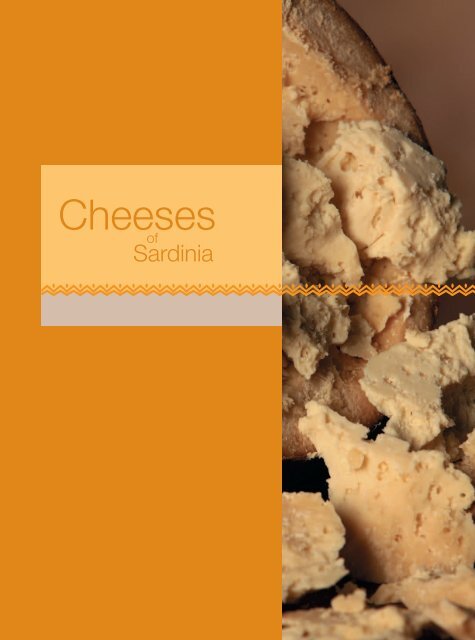
![Graduatoria unica regionale - Quarta sottofase [file.pdf] - Regione ...](https://img.yumpu.com/51462238/1/190x134/graduatoria-unica-regionale-quarta-sottofase-filepdf-regione-.jpg?quality=85)
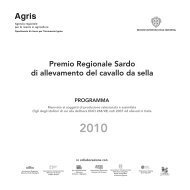
![Determinazione n° 2248 del 29.05.13 [file .pdf] - Sardegna Agricoltura](https://img.yumpu.com/51382474/1/184x260/determinazione-na-2248-del-290513-file-pdf-sardegna-agricoltura.jpg?quality=85)
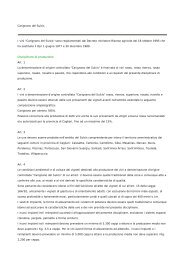
![Graduatoria definitiva [file.pdf] - Sardegna Agricoltura](https://img.yumpu.com/51060372/1/190x134/graduatoria-definitiva-filepdf-sardegna-agricoltura.jpg?quality=85)
![Buone pratiche di pascolamento degli ovini - Agris - ARAS [file .pdf]](https://img.yumpu.com/51056327/1/190x143/buone-pratiche-di-pascolamento-degli-ovini-agris-aras-file-pdf.jpg?quality=85)
![Elenco imprese non ammesse [file.pdf] - Sardegna Agricoltura](https://img.yumpu.com/50925195/1/190x134/elenco-imprese-non-ammesse-filepdf-sardegna-agricoltura.jpg?quality=85)

![Elenco operatori economici [file.pdf]](https://img.yumpu.com/50693571/1/184x260/elenco-operatori-economici-filepdf.jpg?quality=85)
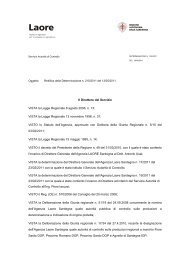
![Domande autorizzate al pagamento - 10.08.2011 [file .pdf]](https://img.yumpu.com/49908540/1/190x134/domande-autorizzate-al-pagamento-10082011-file-pdf.jpg?quality=85)
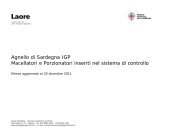
![Elenco delle domande ammissibili [file.pdf] - Sardegna Agricoltura](https://img.yumpu.com/49292155/1/184x260/elenco-delle-domande-ammissibili-filepdf-sardegna-agricoltura.jpg?quality=85)
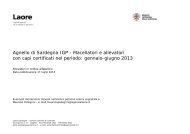
![Domande ammissibili non finanziabili [file.pdf] - Regione Autonoma ...](https://img.yumpu.com/48563769/1/190x134/domande-ammissibili-non-finanziabili-filepdf-regione-autonoma-.jpg?quality=85)